#places to visit in June in India
Explore tagged Tumblr posts
Link
If the summer season is unbearable for you, read this article to find out what are the best places to visit in June in India.
#best places in India to visit in June#places to visit in India in June#places to visit in June in India
0 notes
Text
Best places to visit in june in india this vacation season - The Trip Suggest
As the summer sun arrives in India, The Trip Suggest brings you the perfect escape! June offers a delightful mix of pleasant weather and stunning landscapes across the country. Whether you crave adventure in the Himalayas, tranquility in the hills, or relaxation on the beaches, we've got you covered. Discover our list of the best places to visit in June, creating unforgettable memories this vacation season!
1 note
·
View note
Text
Explore the best places to visit in June in India! Embrace the serene beauty of Ladakh's rugged landscapes, or unwind amidst the lush greenery of Munnar in Kerala. Discover the historical charm of Jaipur's palaces or embark on a wildlife adventure in Jim Corbett National Park. Experience the cultural richness of Varanasi along the banks of the Ganges or indulge in the tranquil beaches of Goa. June beckons with endless possibilities for unforgettable experiences across India.
0 notes
Text
Best Places to Visit in June in India
Come and enjoy the beauty of the mesmerizing beach destinations like Kerala and Goa apart from wonderful hill stations and cities in India. India trip in June from Delhi through Hello-visit will remain an experience that will embed in your memory for the rest of your life. India is among the sensational nations when it comes to world tourism and the main reason is diversity of heritage and natural beauty. From the fascinating Dal lake and Mughal gardens of Kashmir to the backwaters of Kerala and the age old temples of Tamilnadu, India provides it all.

0 notes
Text
So I saw this post about how in the books, Dracula is actually an old man and I always imagined Dracula looked like older Christopher Lee, who played him while he was a kid. While looking him up I accidentally discovered that Christopher Lee was the coolest person in the universe and there is a non-zero chance he was actually Dracula in real life

Sir Christopher Frank Carandini Lee CBE CStJ (May 27th 1922 - June 7th 2015), Sir because he was knighted in 2009 for his charity and his contributions to cinema
So first of all, I saw that he actually knew 8 LANGUAGES (English, Spanish, French, Swedish, Italian, German, Russian and Greek) and was also a staggering 6 feet 5 inches in height. Born in Belgravia in London, one of the most Dracula sounding places I’ve ever heard of, here’s some insane facts about him
•His father, Lieutenant Colonel Geoffrey Trollope Lee of the 60th King's Royal Rifle Corps, fought in the Boer War and World War 1
•His mother, Countess Estelle Marie (née Carandini di Sarzano) was an Edwardian beauty who was painted by Sir John Lavery, Oswald Birley, and Olive Snell, and sculpted by Clare Sheridan
•Lee's maternal great-grandfather, Jerome Carandini, the Marquis of Sarzano, was an Italian political refugee
•Jerome’s wife was English-born opera singer Marie Carandini (née Burgess), meaning that Lee is also related to famous opera singer Rosina Palmer
•His parents would divorce when he was four and his mother would marry Harcourt George St-Croix Rose, banker and uncle of Ian Fleming, making the author of the James Bond books Lee’s step cousin. Fleming would then offer him two roles as the antagonist in the film adaptations of his books, though he was only able to land the antagonist role in The Man With the Golden Gun. It’s believed his role in the film is significantly better and more complex than his book counterpart, played as “a dark side of Bond”
•His family would move and they lived next door to famous silent film actor Eric Maturin
•One night, before he was even 9 years old, he was introduced to Prince Yusupov and Grand Duke Dmitri Pavlovich, THE ASSASSINS OF GRIGORI RASPUTIN, WHOM LEE WOULD GO ON TO PLAY MANY YEARS LATER
•Lee applied for a scholarship to Eton, where his interview was in the presence of the ghost story author M.R. James, who is considered one of the best English language ghost story writers in history and who widely influenced modern horror
•He only missed by King’s Scholar by one place by being bad at math, one of the only flaws God gave him
•Due to lack of working opportunities, Lee was sent to the French Riviera and stayed with his sister and her friends while she was on holiday, and on the way there he stopped briefly in Paris with journalist Webb Miller, a friend of his step father. Webb Miller was an American journalist and war correspondent and was nominated for a Pulitzer Prize for his coverage of the execution of the French serial killer Henri Désiré Landru, also known as BLUEBEARD. He also helped turn world opinion against British colonial rule of India
•While staying with Miller he witnessed Eugen Weidmann’s execution by guillotine, the last public execution ever performed in France
•Arriving in Menton, Lee stayed with the Russian Mazirov family, living among exiled princely families
•When World War 2 began, Lee volunteered to fight for the Finnish Army against the Soviet Union in the Winter War, and a year later, Lee would join the Home Guard. After his father died, he would join the Royal Air Force and was an intelligence officer and leading aircraft man and would later retire as a flight lieutenant in 1946
•While spending some time on leave in Naples, Lee climbed Mount Vesuvius, which erupted only three days later
•After nearly dying in an assault on Monte Cassino, Lee was able to visit Rome where he met his mother’s cousin Nicolò Carandini, who had fought in the Italian Resistance Movement. Nicolò would later go on to be the Italian Ambassador to Britain. Nicolò was actually the one to convince Lee to become an actor in the first place
•Oh yeah Christopher Lee was seconded to the Central Registry of War Criminals and Security Suspects where he was tasked with HELPING TRACK DOWN NAZI WAR CRIMINALS
•Lee’s stepfather served as a captain in the Intelligence Corps
•He was actually told he was too tall to be an actor, though that would honestly help him considering one of his first roles was as The Creature in The Curse of Frankenstein
•He was cast in Captain Horatio Hornblower R.N (1951) as a Spanish captain due to not only his fluency in Spanish but also he knew how to fence!
•Lee’s portrayal of Dracula had a crucial aspect of it which Bela Lugosi’s didn’t have: sexuality, a prime aspect of the original novels.
•While being trapped into playing Dracula under Hammer Film Productions, Lee actually hated the script so much that he would try his best to sneak actual lines from the original novel into the script
•Ironically, he was rejected from playing in The Longest Day because “he didn’t look like a military man”
•Christopher Lee was friends with author Dennis Wheatley, who “was responsible for bringing the occult into him”. He would go on to play in two film adaptations of his novels
•His biggest regret in his career is not taking the role of Sam Loomis from Halloween when offered to him
•Christopher Lee was the only person involved with the Lord of the Rings movies to have actually met J.R.R Tolkien
•When playing Count Dooku, he actually did most of the swordsmanship himself
•Christopher Lee was the second oldest living performer to enter the Billboard Top 100 charts with the song “Jingle Hell” at 91 years old. After media attention, he would get No. 18, and Lee became the oldest person to ever hit the Billboard Top 20 chart
I really am leaving some stuff out here and I may go on
#christopher lee#dracula#dracula by bram stoker#frankensteins creature#adam frankenstein#frankenstein#lord of the rings#star wars#count dooku#saruman#james bond#ian fleming
30 notes
·
View notes
Text
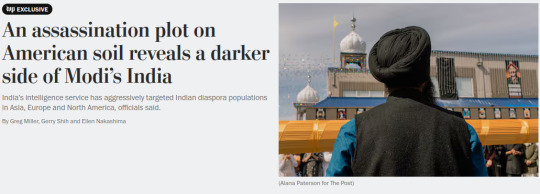
https://www.washingtonpost.com/world/2024/04/29/india-assassination-raw-sikhs-modi/
cool cool cool
(full text below the cut)
An assassination plot on American soil reveals a darker side of Modi’s India
Greg Miller, Gerry Shih, Ellen Nakashima
The White House went to extraordinary lengths last year to welcome Indian Prime Minister Narendra Modi in a state visit meant to bolster ties with an ascendant power and potential partner against China.
Tables on the South Lawn were decorated with lotus blooms, the symbol of Modi’s Bharatiya Janata Party. A chef was flown in from California to preside over a vegetarian menu. President Biden extolled the shared values of a relationship “built on mutual trust, candor and respect.”
But even as the Indian leader was basking in U.S. adulation on June 22, an officer in India’s intelligence service was relaying final instructions to a hired hit team to kill one of Modi’s most vocal critics in the United States.
The assassination is a “priority now,” wrote Vikram Yadav, an officer in India’s spy agency, the Research and Analysis Wing, or RAW, according to current and former U.S. and Indian security officials.
Yadav forwarded details about the target, Sikh activist Gurpatwant Singh Pannun, including his New York address, according to the officials and a U.S. indictment. As soon as the would-be assassins could confirm that Pannun, a U.S. citizen, was home, “it will be a go ahead from us.”
Yadav’s identity and affiliation, which have not previously been reported, provide the most explicit evidence to date that the assassination plan — ultimately thwarted by U.S. authorities — was directed from within the Indian spy service. Higher-ranking RAW officials have also been implicated, according to current and former Western security officials, as part of a sprawling investigation by the CIA, FBI and other agencies that has mapped potential links to Modi’s inner circle.
In reports that have been closely held within the American government, U.S. intelligence agencies have assessed that the operation targeting Pannun was approved by the RAW chief at the time, Samant Goel. That finding is consistent with accounts provided to The Washington Post by former senior Indian security officials who had knowledge of the operation and said Goel was under extreme pressure to eliminate the alleged threat of Sikh extremists overseas. U.S. spy agencies have more tentatively assessed that Modi’s national security adviser, Ajit Doval, was probably aware of RAW’s plans to kill Sikh activists, but officials emphasized that no smoking gun proof has emerged.
Neither Doval nor Goel responded to calls and text messages seeking comment.
This examination of Indian assassination plots in North America, and RAW’s increasingly aggressive global posture, is based on interviews with more than three dozen current and former senior officials in the United States, India, Canada, Britain, Germany and Australia. Citing security concerns and the sensitivity of the subject, most spoke on the condition of anonymity.
That India would pursue lethal operations in North America has stunned Western security officials. In some ways, however, it reflects a profound shift in geopolitics. After years of being treated as a second-tier player, India sees itself as a rising force in a new era of global competition, one that even the United States cannot afford to alienate.
Asked why India would risk attempting an assassination on U.S. soil, a Western security official said: “Because they knew they could get away with it.”
The foiled assassination was part of an escalating campaign of aggression by RAW against the Indian diaspora in Asia, Europe and North America, officials said. The plot in the United States coincided with the June 18 shooting death of Sikh activist Hardeep Singh Nijjar in Surrey, B.C., near Vancouver — an operation also linked to Yadav, according to Western officials. Both plots took place amid a wave of violence in Pakistan, where at least 11 Sikh or Kashmiri separatists living in exile and labeled terrorists by the Modi government have been killed over the past two years.
The Indian intelligence service has ramped up its surveillance and harassment of Sikhs and other groups overseas perceived as disloyal to the Modi government, officials said. RAW officers and agents have faced arrest, expulsion and reprimand in countries including Australia, Germany and Britain, according to officials who provided details to The Post that have not previously been made public.
The revelations have added to Western concerns about Modi, whose tenure has been marked by economic growth and rising global stature for India, but also deepening authoritarianism. A recent report by Freedom House, a human rights organization, listed India among the world’s practitioners of “transnational repression,” a term for governments’ use of intimidation or violence against their own citizens — dissidents, activists, journalists — in others’ sovereign territory.
India is part of an expanding roster of countries employing tactics previously associated with China, Russia, Iran, Saudi Arabia and other repressive regimes. It is a trend fueled by factors ranging from surging strains of nationalism and authoritarianism to the spread of social media and spyware that both empower and endanger dissident groups.
India’s Ministry of External Affairs declined to respond to detailed questions submitted by The Post or provide comment for this article. Responding to questions raised by a Post reporter at a news briefing last week, spokesman Randhir Jaiswal said that India was still investigating the allegations and that the Pannun case “equally impacts our national security.”
Jaiswal referred reporters to previous ministry statements that targeted killings are “not our policy.”
For the Biden administration, which has spent three years cultivating closer ties with India, the assassination plots have pitted professed values against strategic interests.
Last July, White House officials began holding high-level meetings to discuss ways to respond without risking a wider rupture with India, officials said. CIA Director William J. Burns and others have been deployed to confront officials in the Modi government and demand accountability. But the United States has so far imposed no expulsions, sanctions or other penalties.
Even the U.S. criminal case reflects this restraint. Senior officials at the Justice Department and FBI had pushed to prosecute Yadav, officials said, a step that would have implicated RAW in a murder-for-hire conspiracy. But while a U.S. indictment unsealed in November contained the bombshell allegation that the plot was directed by an Indian official, it referred to Yadav as only an unnamed co-conspirator, “CC-1,” and made no mention of the Indian spy agency.
Justice Department officials who took part in the White House deliberations sided against those urging criminal charges against Yadav. Administration officials denied any undue influence. “Charging decisions are the prerogative of law enforcement alone,” said National Security Council spokesperson Adrienne Watson, “and the Biden NSC has rigorously respected that independence.”
The only U.S. charges made public to date are against an alleged middleman, Nikhil Gupta, who is described in the indictment as an Indian drug and weapons trafficker enlisted to hire a contract killer. Gupta, an Indian national who has denied the charges, was arrested in Prague on June 30 and remains in prison. He is awaiting a Czech court ruling on a U.S. request for his extradition.
Even in recent days, the Biden administration has taken steps to contain the fallout from the assassination plot. White House officials warned the Modi government this month that The Post was close to publishing an investigation that would reveal new details about the case. It did so without notifying The Post.
Laying a trap
For decades, RAW was regarded as a regional player, preoccupied by proxy wars with Pakistan’s Inter-Services Intelligence spy agency. Under Modi, however, RAW has been wielded as a weapon against dissidents in India’s vast global diaspora, according to current and former U.S. and Indian officials.
The U.S. operation shows how RAW tried to export tactics it has used for years in countries neighboring India, officials said, including the use of criminal syndicates for operations it doesn’t want traced to New Delhi. It also exposed what former Indian security officials described as disturbing lapses in judgment and tradecraft.
After the plot against Pannun failed, the decision to entrust Yadav with the high-risk mission sparked recriminations within the agency, former officials said. Rather than joining RAW as a junior officer, Yadav had been brought in midcareer from India’s less prestigious Central Reserve Police Force, said one former official. As a result, the official said, Yadav lacked training and skills needed for an operation that meant going up against sophisticated U.S. counterintelligence capabilities.
Attempts by The Post to locate or contact Yadav were unsuccessful. A former Indian security official said he was transferred back to the Central Reserve Police Force after the Pannun plot unraveled.
The U.S. affidavit describes Yadav as an “associate” of Gupta who procured the alleged drug trafficker’s help by arranging for the dismissal of criminal charges he faced in India. Gupta had a history of collaborating with India’s security services on operations in Afghanistan and other countries, according to a person with knowledge of his background, but he had never been used for jobs in the West.
Petr Slepicka, a lawyer in Prague who represents Gupta, declined to comment on the case except to say that his client denies the charges against him. In court filings in India, Gupta’s family members described him as an innocent “middle-class businessman” whose arrest was a case of mistaken identity. They said he traveled to Prague “for tourism” and to explore new markets for a “handicraft” business, according to the court filings.
Yadav and Gupta spent weeks trading encrypted texts about the plot to kill Pannun, according to a U.S. affidavit filed in support of the request for Gupta’s extradition. To find a willing assassin, Gupta reached out to someone he had been in touch with for at least eight years and understood to be a drug and weapons dealer. In reality, according to the affidavit, the supposed dealer was an informant for the U.S. Drug Enforcement Administration.
The two were discussing “another potential firearms and narcotics transaction,” according to the affidavit when, on May 30, Gupta abruptly asked “about the possibility of hiring someone to murder a lawyer living in New York.”
From that moment, U.S. agents had an inside but incomplete view of the unfolding conspiracy. They orchestrated Gupta’s introduction to a supposed assassin who was actually an undercover agent, according to court filings. They captured images of cash changing hands in a car in New York City — a $15,000 down payment on a job that was to cost $100,000 when completed.
At one point, the indictment said, U.S. agents even got footage of Gupta turning his camera toward three men “dressed in business attire, sitting around a conference room,” an apparent reference to Indian operatives overseeing the mission. “We are all counting on you,” Gupta told the purported assassin on the video call, according to the indictment.
Yadav indicated that there would be more jobs after Pannun, including one “big target” in Canada. But a separate hit team got to that assignment first, according to the U.S. indictment, suggesting that RAW was working with multiple criminal elements.
Hours after Nijjar was gunned down in his car on June 18 outside the Guru Nanak Sikh Gurdwara temple in Surrey, Yadav sent a video clip to Gupta “showing Nijjar’s bloody body slumped in his vehicle,” according to the indictment.
The message arrived as U.S. authorities were laying a trap for Gupta. Seeking to draw him out of India and into a friendly jurisdiction, U.S. agents used their DEA informant to persuade Gupta to travel to the Czech Republic for what he was led to believe would be a clandestine meeting with his American contact, according to officials familiar with the operation.
Gupta arrived in Prague on June 30 — 11 days after Czech authorities, acting at the behest of U.S. officials, had secretly issued an arrest warrant for him.
As he exited Vaclav Havel Airport, Gupta was intercepted by Czech police, who ushered him into a vehicle in which two U.S. federal agents were waiting, according to court filings submitted by Gupta’s family in India. He was questioned for hours while the car meandered around the city. His laptop was seized and his phone held to his face to unlock it, according to the family petition.
Gupta was eventually deposited in Prague’s Pankrac Prison, where he remains awaiting possible extradition. Seeking help, Gupta’s family tried to reach Yadav last year but could find no trace of him, according to a person familiar with the matter. After months of near-constant contact with Gupta, the person said, CC-1 had “disappeared.”
Engaging with the underworld
Though Yadav served as RAW’s point man, current and former officials said the operation involved higher-ranking officials with ties to Modi’s inner circle. Among those suspected of involvement or awareness are Goel and Doval, though U.S. officials said there is no direct evidence so far of their complicity.
As RAW chief at the time, Goel was “under pressure” to neutralize the alleged threat posed by Sikh extremists overseas, said a former Indian security official. Goel reported to Doval, and had ties to the hard-line national security adviser going back decades.
Both had built their reputations in the 1980s, when the country’s security services battled Sikh separatists and Muslim militants. They were part of a generation of security professionals shaped by those conflicts much the way their U.S. counterparts came to be defined by the Sept. 11, 2001, attacks.
Doval, 79, has claimed roles in undercover missions from the jungles of Myanmar to the back alleys of Lahore, Pakistan — tales that contributed to his frequent depiction in the press as the “James Bond of India.”
He also exhibited a willingness to engage with the criminal underworld. In 2005, after retiring as head of India’s domestic intelligence service, he was inadvertently detained by Mumbai police while meeting with a reputed gangster. Doval was seeking to enlist one crime boss to assassinate another, according to media reports later confirmed by senior Indian officials.
Before being tapped as national security adviser by Modi in 2014, Doval publicly called for India’s security apparatus to shift from “defense” to “defensive offense” against groups threatening India from other countries, especially Pakistan.
Goel, who was then rising into the senior ranks at RAW, shared Doval’s instincts. Police forces under Goel’s command in the early 1990s were tied to more than 120 cases of alleged extrajudicial killings, forced disappearances or torture, according to a database maintained by Ensaaf, an Indian human rights group based in the United States. Goel was so closely associated with the brutal crackdown that he became an assassination target, according to associates who said he took to traveling in a bulletproof vehicle.
Former Indian officials who know both men said Goel would not have proceeded with assassination plots in North America without the approval of his superior and protector.
“We always had to go to the NSA for clearance for any operations,” said A.S. Dulat, who served as RAW chief in the early 2000s, referring to the national security adviser. Dulat emphasized in an interview with The Post that he did not have inside knowledge of the alleged operations, and that assassinations were not part of RAW’s repertoire during his tenure.
U.S. intelligence agencies have reached a similar conclusion. Given Doval’s reputation and the hierarchical nature of the Indian system, CIA analysts have assessed that Doval probably knew of or approved RAW’s plans to kill Sikhs his government considered terrorists, U.S. officials said.
A fierce crackdown
India’s shift to “defensive offense” was followed by a series of clashes between RAW and Western domestic security services.
In Australia, two RAW officers were expelled in 2020 after authorities broke up what Mike Burgess, head of the Australian intelligence service, described as a “nest of spies.”
Foreign officers were caught monitoring “their country’s diaspora community,” trying to penetrate local police departments and stealing information about sensitive security systems at Australian airports, Burgess said in a 2021 speech. He didn’t name the service, but Australian officials confirmed to The Post that it was RAW.
In Germany, federal police have made arrests in recent years to root out agents RAW had recruited within Sikh communities. Among them, German officials said, were a husband and wife who operated a website purportedly covering local Sikh events but who were secretly on RAW’s payroll.
In Britain, RAW’s surveillance and harassment of the Sikh population — especially a large concentration near Birmingham — became so egregious in 2014 and 2015 that MI5, Britain’s domestic security service, delivered warnings to Goel, who was then serving as RAW’s station chief in London.
When confronted, Goel scoffed at his counterparts and accused them of coddling Sikh activists he said should be considered terrorists, according to current and former British officials. After further run-ins, British authorities threatened to expel him, officials said. Instead, Goel returned to New Delhi and continued to climb RAW’s ranks until, in 2019, he was given the agency’s top job.
RAW’s record of aggressive activity in Britain has fanned suspicion that the agency was involved in the death of Sikh activist Avtar Singh Khanda, who died in Birmingham last year, three days before Nijjar was killed in Canada. British officials have said Khanda suffered from leukemia and died of natural causes, though his family and supporters have continued to press for further investigation.
A U.S. State Department human rights report released this month catalogued India’s alleged engagement in transnational repression. It cited credible accounts of “extraterritorial killing, kidnapping, forced returns or other violence,” as well as “threats, harassment, arbitrary surveillance and coercion” of overseas dissidents and journalists.
RAW’s operations in Western countries during Modi’s tenure have been overwhelmingly aimed at followers of the Sikh religion, especially a minority faction seeking to revive the largely dormant cause of creating a separate state called “Khalistan.”
That movement had peaked in the 1980s, when thousands were killed in violent skirmishes between the Indian government and Sikh insurgents. One brutal sequence beginning in 1984 included an Indian assault on the Sikh religion’s holiest site, the Golden Temple; the assassination of Prime Minister Indira Gandhi by Sikhs in her security detail; and the bombing of an Air India flight widely attributed to Sikh extremists. A fierce crackdown quashed the insurgency, prompting an exodus of Sikhs to diaspora communities in Canada, the United States and Britain.
As Sikhs settled into their new lives abroad, the Khalistani cause went quiet until a new generation of activists — whose leaders included Pannun and Nijjar — sought to rekindle the movement with unofficial referendums on Sikh statehood and with protests that at times have seemed to glorify violence. A parade in Canada last year included a float depicting Indira Gandhi’s assassination, and Khalistan supporters have stormed and defaced Indian diplomatic facilities in Western cities.
The effort has seemed to gain little traction beyond a minority within the diaspora communit
32 notes
·
View notes
Note
How was Ladakh? I heard it's very scenic, I've been meaning to visit.
I've been mulling this over for a while, because this trip to Ladakh was also my first time in India, and thus the two things are a bit intertwined. Also one must take into consideration that most of what I saw outside of Leh, I saw while clinging to the back of a motorbike, often wondering if I was sustaining brain damage. I suspected the natural wonders were twice as awe-inspiring when observed with the knowledge that they could be the last thing I ever saw. If you want to go on two wheels, do get proper gear and think twice about riding pillion.
That said, it really was gorgeous out there.
If you like mountains, it's the place to be. If you like Tibetan Buddhist monasteries, it's also the place to be. I wasn't sure what to expect in regards to human interactions, but on my own in Leh there was basically no hassle from strangers. If anything the hassle was that the tour office the guesthouse recommended did not have anyone going on the route I wanted to take- which was how I ended up on a motorcycle trek with some random guys from the guesthouse to begin with. For the rest of it, they handled everything, for which I'm eternally grateful.
If you get the chance to go, go! I'm glad I went, but if I could go back in time I'd also be better prepared for the elements- despite copious amounts of sunblock eventually I had to accept that I was just going to be sunburnt, cracked, and chapped, with dried out nasal passages. It also gets really cold, even in June. I didn't bring enough warm stuff cause I only had a carry-on and I figured I'd just buy something there (which inevitably I did), but then no one from any airline actually checked my luggage weight at any point, so I kinda wish I'd just brought a whole ass winter coat. Two weeks was also not enough, I stuck around Leh to acclimatise for 4 days (which felt like overkill at first but it was really a good idea), and only ended up seeing Nubra Valley, Pangong Tso, and Alchi Monastery with the guys. I had hoped to also see Tso Moriri and Hanle but was too worn out by the time they left, and spent the rest of my days hanging around Leh feeling rather ill.
All in all, I wasn't really sure what to expect in going, but it exceeded all expectations. I also think if I had not already been on enough terrible roads in various countries in the past, I might have been slightly overwhelmed. If I hadn't been in the company of people who were fond of street dogs (and finally desensitised me), I probably would not have had as good a time because there are a lot of them. They do make quite a racket at night, bring earplugs. In the end though, the pros certainly outweigh the cons (and obviously I survived and came back to tell the tale.) If you're looking for scenic, I give it 11/10, possibly more.
Final note, Indian SIM cards don't work in Ladakh, but the Ladakh SIM card works in India (I'm not sure about Jammu + Kashmir). J+K Bank ATMs did NOT want to dispense me cash with my foreign card (unfortunate because they were the only ones outside the city), but other banks worked fine.
9 notes
·
View notes
Link
Make your summer more interesting by traveling to India. Check out the cold places to visit in June in India like Shimla, Sonamarg, etc.
0 notes
Text
India’s Manipur state is on the boil, with social media flooded with visuals of people killed and injured in armed attacks. Violent protests broke out after an attack on June 29, while a church was looted and burned down two days prior. Over the past two months, Manipur’s largely Hindu Meitei community, which constitute a little over half of the state’s population, and the Christian-majority Kuki tribal group, which makes up about 16 percent of the population, have violently attacked each other in an outpouring of recrimination and revenge. Over 100 people have been killed and nearly 40,000 displaced. Angry mobs and armed vigilantes have burned down homes, churches, and offices.
Manipur has long faced secessionist insurgencies in which both military and state security forces have committed serious human rights abuses. Longstanding ethnic disputes have also erupted into violence. However, instead of adopting measures that would ensure the security of all communities, the Bharatiya Janata Party government of N. Biren Singh in Manipur state has replicated the national party’s politically motivated divisive policies that promote Hindu majoritarianism. Many Meitei seek the same affirmative action privileges that are provided to the Kuki under their protected tribal status. Tribal groups, particularly the Kuki, have argued that this would expand Meitei economic dominance and allow them to take over land in tribal areas.
30 Jun 23
2 Jul 23
Rahul Gandhi, India's main opposition leader, who was on a two-day visit to the region last week, said he was pained to see the situation and people suffering. "I came here because I wanted to share the pain of the people of Manipur. It is a horrible tragedy that has taken place," the Congress party leader said on Friday.
3 Jul 23
29 notes
·
View notes
Text
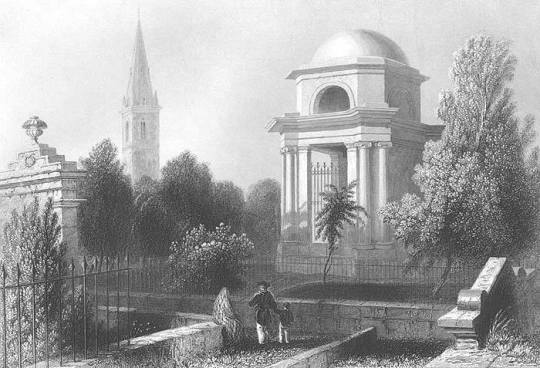

On November 29th 1813 a campaign was launched in Dumfries to raise public subscriptions to fund a mausoleum for the poet Robert Burns.
Robert Burns was originally buried in St Michael's Churchyard, Dumfries, in a simple grave, marked only by a plain stone slab. In 1803 when Dorothy and William Wordsworth visited Dumfries they had difficulty in even finding the grave. Burns' admirers came to believe that this was an insufficient memorial to the poet.
A circular was published on 29 November 1813 calling for the public to subscribe to the cost of a mausoleum. 18 local worthies attended a meeting in the George Inn in Dumfries held on 16 December 1813, and the project was launched.
Amongst those who took a leading part in the fund raising campaign was Sir Walter Scott. Money flowed in from all over people as far afield as India and America donated money. By spring 1815 enough funding was in place for the work, based on a design by Thomas Hunt of London, to be put out to tender. The contract was won by a local stonemason, John Milligan, with a tender of £331.8s.6d. The first stone was laid on 5 June 1815, in a less crowded part of the churchyard than where Burns had initially been buried.
The construction of the mausoleum ran into a number of problems caused by Milligan's failure to comply with the specifications or take directions from the committee supervising the work. It was only in September 1817 that the mausoleum was complete and the monument installed within it. The actually monument within the mausoleum was the work of Peter Turnerelli, an Irish-Italian sculptor working in London. The statue on the wall shows the Muse Coila hovering above the figure of Robert Burns who is standing by his plough.
On the 19th of September 1815, Robert Burns’s body was exhumed from his original, modest grave, and reinterred in the Mausoleum which stands in the south-eastern corner of St Michaels kirkyard, in 1834 when Jean Armour (Robert Burns's Wife) died she was buried alongside him within the Mausoleum
17 notes
·
View notes
Text
Saints&Reading: Monday, June 24, 2024
june 11_june 24

Day of the holy Spirit-Fast free week
THE HOLY APOSTLE BARTHOLOMEW (1st.c.)

The Holy Apostle Bartholomew was born at Cana of Galilee and was one of the Twelve Apostles of Christ. After the Descent of the Holy Spirit on the Day of Pentecost, it fell by lot to the holy Apostles Bartholomew and Philip (Comm. 14 November) to preach the Gospel in Syria and Asia Minor. In their preaching they dispersed through various cities, and then met up together again.
Accompanying the holy Apostle Philip was his sister, the holy virgin Saint Mariam.Traversing the cities of Syria and Myzia, they underwent much hardship and tribulations, they were stoned and they were locked up in prison. In one of the villages they met up with the Apostle John the Theologian, and together they set off to Phrygia. In the city of Hieropolis by the power of their prayers they destroyed an enormous viper, which the pagans worshipped as a god. The holy Apostles Bartholomew and Philip with his sister proved their preaching with many a miraculous sign.
At Hieropolis there lived a man named Stakhios, who had been blind for 40 years. When he received healing, he then believed in Christ and was baptized. News of this spread throughout the city, and a multitude of people thronged to the house where the apostles were staying. The sick and those beset by demons were released from their infirmities, and many were baptised. The city governor gave orders to arrest the preachers and throw them in prison, and to burn down the house of Stakhios. At the trial pagan priests came forth with the complaint, that the strangers were turning people away from the worship of the ancestral gods. Thinking that perhaps some sort of magic power was hidden away in the clothes of the apostles, the governor gave orders to strip them. But Saint Mariam began to seem like a fiery torch before their eyes, and none dared touch her.
They sentenced the saints to crucifixion. The Apostle Philip was raised up on the cross upside down. But then began an earthquake, and a fissure in the earth swallowed up the city governor, together with the pagan priests and many of the people. Others took fright and rushed to take down the apostles from the crosses. Since the Apostle Bartholomew had not been put up high, they managed to take him down quickly. The Apostle Philip however had died. Making Stakhios the bishop of Hieropolis, the Apostle Bartholomew and Blessed Mariam left the city and moved on.
Preaching the Word of God, Mariam arrived in Likaoneia, where she peacefully died (Comm. 17 February). The Apostle Bartholomew set off to India, where he translated the Gospel of Matthew from Hebrew and converted many pagans to Christ. He visited likewise Great Armenia (the country between the River Kura and the upper stretches of the Tigrus and Euphrates Rivers), where he worked many a miracle and healed the daughter of the emperor Polimios from the demons afflicting her. The emperor in gratitude sent gifts to the apostle, who however refused to accept them, saying that he sought only for the salvation of the souls of mankind. Then Polimios together with the empress, their healed daughter and many of those close to them accepted Baptism. And people from the ten cities of Great Armenia followed their example. But through the intrigues of the pagan priests, the Apostle Bartholomew was seized by the emperor brother Astiag in the city of Al'ban (now the city of Baku), and crucified upside down. But even from the cross he did not cease to proclaim the good news about Christ the Saviour. Finally, on orders from Astiag, they flayed the skin from the Apostle Bartholomew and cut off his head. Believers placed his remains in a pewter coffin and buried him.
In about the year 508, the holy relics of the Apostle Bartholomew were transferred to Mesopotamia, to the city of Dara. When the Persians seized the city in 574, Christians took the relics of the Apostle Bartholomew with them when they fled to the shores of the Black Sea. But since the enemy overtook them there, they were compelled to leave the coffin at the sea. By the power of God the coffin miraculously arrived on the island of Lipara. In the IX Century, after the taking of the island by the Arabs, the holy relics were transferred to the Neapolitan city of Beneventum in Italy, and in the X Century part of the relics were transferred to Rome.
The holy Apostle Bartholomew is mentioned in the Vita of Joseph the Melodist (+ 883, Comm. 4 April). Having received from a certain man part of the relics of the Apostle Bartholomew, the Monk Joseph conveyed them to his own monastery near Constantinople, and he built a church in the name of the Apostle Bartholomew, placing therein part of the relics. The Monk Joseph ardently desired to compile a laudation in song in honor of the saint, and he fervently besought God to grant him the ability to do so. On the feastday in memory of the Apostle Bartholomew, the Monk Joseph caught sight of him at the altar. He beckoned to Joseph and took the holy Gospel from the altar-table and pressed it to his bosom with the words: "Bless thou the Lord, and let thine song delight the world". And from that time the Monk Joseph began to write hymns and canons and with them adorn not only the feastday of the Apostle Bartholomew, but also the feastdays of many other saints, – compiling altogether about 300 canons. Saints John Chrysostom, Cyril of Alexandria, Epiphanios of Cyprus and certain other teachers of the Church regard the Apostle Bartholomew as being one and the same person as Nathanael (Jn. 1: 45-51, 21: 2).
THE HOLY DISCIPLE BARNABAS (1st.c.)

The Holy Disciple Barnabas was born on the island of Cyprus into a family of rich Hebrews .He was named Joseph and received his education in Jerusalem. Being raised with his friend and co-student Saul (the future Apostle Paul) under the well-known teacher of the law, Gamaliel. Joseph was pious; he frequented the Temple, strictly observed the fasts, and avoided youthful distractions. During this time, our Lord Jesus Christ began His public ministry. Seeing the Lord and hearing His Divine Words, Joseph believed in Him as the Messiah; he was ardent with love for Him and followed Him. The Lord chose him to be among His Seventy Disciples. And it was amongst the followers of the Lord that Joseph received a second name – Barnabas, which in Hebrew means "son of consolation". After the Ascension of the Lord to Heaven, Barnabas sold his land near Jerusalem and he brought the money to the feet of the Apostles, leaving nothing for himself (Acts 4: 36-37).
When Saul, after his conversion, arrived in Jerusalem and sought to join the followers of Christ, everyone there was afraid of him as having been a persecutor only a short while before. Barnabas, however, came with him to the Apostles and reported how the Lord had appeared to Saul on the road to Damascus (Acts 9: 26-28).
As entrusted him by the Apostles, Saint Barnabas went to Antioch to encourage the believers: "Having come and having seen the grace of God, he rejoiced and he urged all to cleave to the Lord with sincerity of heart" (Acts 11: 23). Then the Disciple Barnabas went to Tarsis, and thereafter he brought the Apostle Paul to Antioch, where for about a year they taught the people in the Church. It was here that the disciples first began to be called Christians (Acts 11: 26). With the onset of famine, and taking along generous alms, Paul and Barnabas returned to Jerusalem. When king Herod killed the Apostle James Zebedaeus, and to please the Jews had the Apostle Peter put under guard in prison, Saints Barnabas and Paul and Peter were led out of the prison by an Angel of the Lord, and they hid out at the house of Barnabas' aunt Maria. Later, when the persecution had quieted down, they returned to Antioch, taking with them Maria's son John, surnamed Mark. Under the inspiration of the Holy Spirit, the prophets and teachers there imposed hands upon Barnabas and Paul, and sent them off on matters to which the Lord had summoned them (Acts 13: 2-3). Arriving in Seleucia, they sailed off to Cyprus and in the city of Salamis they preached the Word of God in the Jewish synagogues. On Paphos they came across a sorcerer and false-prophet named Barjesus, who was close with the proconsul Sergios. Wanting to hear the Word of God, the proconsul invited the saints to come to him. The sorcerer attempted to sway the proconsul from the faith, but the Apostle Paul denounced the sorcerer, who through his words suddenly fell blind. The proconsul believed in Christ (Acts 13: 6-12). From Paphos, Barnabas and Paul set sail for Pergamum, Pamphylia and then preached to the Jews and the Gentiles at Pisidian, Antioch, and throughout that region. The Jews made a riot and expelled Paul and Barnabas. The saints arrived in Iconium, but learning that the Jews wanted to stone them, they withdrew to Lystra and Derben. There the Apostle Paul healed a man crippled in the legs from birth. The people assumed them to be the gods Zeus and Hermes and wanted to offer them sacrifice. The saints barely persuaded them not to do this (Acts 14: 8-18).
When the question arose whether those converted from the Gentiles should accept circumcision, Barnabas and Paul set off to Jerusalem. There, they were warmly received by the Apostles and elders. The preachers related "what God had wrought with them and how He had opened the door of faith to the Gentiles "Acts 14: 27). After long deliberations, the Apostles collectively resolved not to impose upon Gentile-Christians any sort of burden beyond that necessary – to refrain from idol-sacrifice and its blood, and from things strangled, and from fornication, and not to do to others that which they not do (Acts 15: 19-20). Letters were dispatched with Barnabas and Paul, and they again evangelised at Antioch, and after a certain while they decided to visit the other cities, where earlier they had preached. The Disciple Barnabas wanted to take Mark along with him, but the Apostle Paul did not want to, since earlier he had gone off from them. A quarrel arose, and they separated. Paul took Silas with him and set off to Syria and Cilicia, and Barnabas took Mark to Cyprus (Acts 15: 36-41). Having multiplied the number of believers, the Disciple Barnabas set off to Rome, where he was perhaps the first to preach Christ. The Disciple Barnabas founded the episcopal seat at Mediolanum (now Milan in Italy), and upon his return to Cyprus he continued to preach about Christ the Saviour. Thereupon the enraged Jews incited the pagans against Saint Barnabas, and they led him out beyond the city and stoned him, and then built a bon-fire so as to burn the body. Later on, having come upon this spot, Mark took up the unharmed body of the Disciple Barnabas and buried it in a cave, placing upon the bosom of Saint Barnabas, in accord with his final wishes, the Gospel of Matthew copied out in his own hand.
The Disciple Barnabas died in about the year 62, at age 76. Over time, his burial place was forgotten. But numerous signs appeared at this place. In 448, during the time of the emperor Zeno, the Disciple Barnabas thrice appeared in a dream-vision to the Cyprus archbishop Anthymos. He indicated the place where his relics were buried. Starting to dig at the indicated spot, Christians found the saint's incorrupt body, and upon his chest was the Holy Gospel. From these times, the Cyprus Church began to be termed Apostolic in origin and received the right of autonomously choosing its head. Thus, the Disciple Barnabas defended Cyprus against the pretensions of the opponent of the Fourth OEcumenical Council, the heretic surnamed Knapheios, who had usurped the patriarchal throne at Antioch and sought to gain dominion over the Cyprus Church.
© 1996-2001 by translator Fr. S. Janos.


EPHESIANS 5:8-19
8 For you were once darkness, but now you are light in the Lord. Walk as children of light 9 for the fruit of the Spirit is in all goodness, righteousness, and truth), 10 finding out what is acceptable to the Lord. 11 And have no fellowship with the unfruitful works of darkness, but rather expose them. 12 For it is shameful even to speak of those things which are done by them in secret. 13 But all things that are exposed are made manifest by the light, for whatever makes manifest is light. 14 Therefore He says: "Awake, you who sleep, Arise from the dead, And Christ will give you light." 15 See then that you walk circumspectly, not as fools but as wise, 16 redeeming the time, because the days are evil. 17 Therefore do not be unwise, but understand what the will of the Lord is. 18 And do not be drunk with wine, in which is dissipation; but be filled with the Spirit, 19 speaking to one another in psalms and hymns and spiritual songs, singing and making melody in your heart to the Lord,
MATTHEW 18:10-20
10 Take heed that you do not despise one of these little ones, for I say to you that in heaven their angels always see the face of My Father who is in heaven. 11 For the Son of Man has come to save that which was lost. 12 What do you think? If a man has a hundred sheep, and one of them goes astray, does he not leave the ninety-nine and go to the mountains to seek the one that is straying? 13 And if he should find it, assuredly, I say to you, he rejoices more over that sheep than over the ninety-nine that did not go astray. 14 Even so it is not the will of your Father who is in heaven that one of these little ones should perish. 15 Moreover if your brother sins against you, go and tell him his fault between you and him alone. If he hears you, you have gained your brother. 16 But if he will not hear, take with you one or two more, that 'by the mouth of two or three witnesses every word may be established.' 17 And if he refuses to hear them, tell it to the church. But if he refuses even to hear the church, let him be to you like a heathen and a tax collector. 18 Assuredly, I say to you, whatever you bind on earth will be bound in heaven, and whatever you loose on earth will be loosed in heaven. 19 Again I say to you that if two of you agree on earth concerning anything that they ask, it will be done for them by My Father in heaven. 20 For where two or three are gathered together in My name, I am there in the midst of them.
#orthodoxy#orthodoxchristianity#easternorthodoxchurch#originofchristianity#spirituality#holyscriptures#gospel#bible#wisdom#faith#saints
3 notes
·
View notes
Text
Meghalaya Tourism: An Ideal Travel Guide

Meghalaya, meaning "the abode of clouds", is a paradise for nature lovers. This hill station in Northeast India has captivated travelers worldwide with its truly magnificent and enchanting skies. Nestled in the Himalayas, Meghalaya shares its borders with Bangladesh to the east and south and Assam to the north.
Unforgettable Experiences Await
Meghalaya boasts a plethora of tourist attractions, from towering hills and valleys to countless lakes, cascading waterfalls, pitch-black caves, and sacred forests. Panoramic views, misty hills, terraced slopes, flowing waterfalls, and serpentine rivers are sure to enthrall your soul.
Meghalaya will awaken all your senses. From cultural highlights to heart-pounding adventures, numerous unforgettable encounters await the curious traveler.
Cultural Tapestry
Meghalaya's cultural tapestry is woven with numerous threads. The vibrant traditional festivals are a fantastic way to experience the uniqueness of the state's indigenous population. Soak in the customs of the locals and the breathtaking views while learning about the message each festival conveys. Explore some of the state's local history while sampling the various cuisines it has to offer. Get lost in the area's markets and take advantage of the burgeoning nightlife scene. Meghalaya is renowned for its contemporary cultural celebrations that honor local and international artistic talent. Expect a showcase of music, art, intriguing cultural customs, and more.
Top Tourist Destinations
Popular tourist spots in Meghalaya include Shillong, Tura, Jowai, Cherrapunjee, Nongpoh, and Baghmara. There are numerous tourist attractions in Meghalaya that are worth a visit, including:
Shillong (Scotland of the East): Explore Shillong Peak, Elephant Falls, Ward's Lake, Don Bosco Museum, and Umiam Lake.
Cherrapunjee (One of the wettest places on Earth): Witness the awe-inspiring Dain-Thlen, Kynrem, Nohkalikai waterfalls, and the marvel of engineering - Double Decker Living Root Bridge. Explore Mawsmai Cave, Seven Sister Falls, and Wei Sawdong Falls.
Mawsynram (Another contender for the wettest place on Earth): Visit the famed Jakrem Hot Spring and the Mawjymbuin Cave.
Mawlynnong (Asia's Cleanest Village): Experience serenity amidst spotless surroundings and explore the Living Root Bridge and Balancing Rock.
Dawki (Crystal-clear Dawki River): Enjoy kayaking, snorkeling, and camping by the river in Shnongpdeng Village. Take in the scenic beauty of the Dawki River and the Indo-Bangladesh Border.
Best Time to Visit:
March to June: Pleasant weather, ideal for sightseeing and adventure activities.
July to September: Perfect for relaxation and enjoying the beauty of the rainy season.
October to November: Witness the vibrant cherry blossoms in autumn.
December to February: Ideal for hiking excursions and exploring nearby locations.
How to Reach Meghalaya:
By Train: The nearest train station is Guwahati (Assam), 180 kilometers away. Taxis or buses can take you to Meghalaya from Guwahati.
By Air: Lokpriya Gopinath Bordoloi International Airport in Guwahati (Assam) is the nearest major airport. Taxis can take you to Meghalaya from the airport.
By Road: Major cities are well-connected to Meghalaya by roadways.
Travel Tips:
Research local permits required for specific activities.
Book your accommodations in advance, especially during peak season.
Pack essentials like rain gear and comfortable shoes.
Plan your itinerary based on your interests and time constraints.
Budget for your trip, including transportation, accommodation, food, and activities.
Sample the local cuisine - a delightful way to experience the culture.
Respect local customs and traditions.
Rainfall in Meghalaya:
Meghalaya receives an average annual rainfall of 1,150 millimeters. The state lives up to its name, with the sky rarely remaining cloud-free.
Weather in Meghalaya:
Meghalaya boasts pleasant weather year-round with an average temperature of 24°C. The monsoon season brings ample rainfall, enhancing the beauty of the natural landscape. Winters are dry with moderate temperatures.
Ready to Explore?
Meghalaya, with its stunning beauty, rich culture, and diverse experiences, is a destination that will leave you mesmerized. Let Kajaawa Tours & Cabs craft your dream Meghalaya adventure and help you discover the hidden gems of this incredible state!
2 notes
·
View notes
Text
Pondicherry Travel Guide 2024: Best Places to Visit & Things To Do
Welcome to your ultimate Pondicherry travel guide for 2024! This guide is designed to help you explore the best places to visit and things to do in this charming coastal town. Whether you’re planning your first trip or returning for another visit, Pondicherry offers a unique blend of culture, history, and natural beauty. Let’s dive in!

History of Pondicherry
Pondicherry, often referred to as “Puducherry” or simply “Pondy,” boasts a rich history that dates back to ancient times. The town has been influenced by various cultures over the centuries, from the Romans and Greeks to the Cholas and Vijayanagara Empire. However, the most significant period in Pondicherry’s history began with the arrival of the French in the late 17th century.
In 1674, the French East India Company established a trading post in Pondicherry, which eventually grew into a thriving colonial settlement. The French influence is still evident today in the town’s architecture, cuisine, and overall ambiance. Walking through the streets of the French Quarter, also known as White Town, feels like stepping back in time to a French colonial era. The grid-patterned streets, colonial buildings, and vibrant bougainvillea-covered walls add to the town’s charm.
Pondicherry remained under French control until 1954, when it was formally transferred to the Republic of India. Despite this change, the town has retained its unique blend of French and Indian cultures, making it a fascinating destination for history enthusiasts.
When to Visit | Pondicherry Travel Guide

Pondicherry enjoys a tropical climate, with warm temperatures throughout the year. However, the best time to visit is from October to March, when the weather is pleasant and ideal for sightseeing and outdoor activities.
October to March: This period is considered the best time to visit Pondicherry. The temperatures range from 20°C to 30°C, making it comfortable for exploring the town, visiting the beaches, and enjoying various outdoor activities. The weather is also perfect for indulging in water sports.
April to June: These months mark the onset of summer in Pondicherry. Temperatures can soar to around 40°C, making it quite hot and humid. If you plan to visit during this time, ensure you stay hydrated and avoid outdoor activities during peak afternoon hours.
July to September: This is the monsoon season in Pondicherry. The town receives moderate to heavy rainfall, which can sometimes disrupt travel plans. However, the rains also bring a refreshing change and make the town’s landscapes lush and green. If you enjoy monsoon travel, this can be a good time to visit.
How to Get to Pondicherry

Pondicherry is well-connected to major cities in India, making it easily accessible by plane, train, car, and bus.
Plane
The nearest airport to Pondicherry is Chennai International Airport, located about 135 kilometers away. Chennai Airport is well-connected to major cities in India and abroad. From the airport, you can hire a taxi or take a bus to reach Pondicherry. The drive from Chennai to Pondicherry takes approximately 3 hours.
Train
Pondicherry has its own railway station, which is well-connected to major cities like Chennai, Bangalore, and Mumbai. Several trains run regularly to and from Pondicherry. The train journey offers scenic views of the countryside and is a comfortable option for travelers.
Car
If you prefer driving, you can reach Pondicherry by car. The town is connected to Chennai via the East Coast Road (ECR), which offers a picturesque drive along the coast. The journey takes about 3 hours, depending on traffic conditions. You can also drive from Bangalore, which is approximately 320 kilometers away and takes around 6-7 hours.
Bus

Top 5 Reasons to Visit | Pondicherry Travel Guide
Pondicherry offers a unique blend of cultural heritage, natural beauty, and modern amenities. Here are the top five reasons to visit this charming town:
1. Fascinating Culture and History
Pondicherry’s rich history and cultural diversity make it a captivating destination. The town’s French colonial heritage is evident in its architecture, cuisine, and way of life. Explore the charming streets of the French Quarter, visit historical landmarks, and immerse yourself in the town’s unique blend of French and Indian cultures.
2. Fabulous Food
Pondicherry is a food lover’s paradise, offering a delightful mix of French, South Indian, and international cuisines. From charming cafes serving croissants and coffee to traditional South Indian eateries, there’s something to satisfy every palate. Don’t miss the chance to try local specialties like seafood dishes, crepes, and filter coffee.
3. Shop Local
Pondicherry is known for its vibrant markets and boutique shops. Explore the bustling streets of the town and discover a wide range of handmade products, from textiles and pottery to jewelry and handicrafts. The Sunday Market on Mahatma Gandhi Road is a must-visit for unique souvenirs and local treasures.
4. Hit the Beach
Pondicherry’s coastline is dotted with beautiful beaches, offering a perfect escape for beach lovers. Relax on the sandy shores, take a dip in the clear waters, or indulge in water sports like kayaking and surfing. Popular beaches like Promenade Beach, Paradise Beach, and Auroville Beach are ideal for a day of sun and sea.
5. Auroville

What to Do in Pondicherry
Pondicherry offers a wide range of activities and attractions to suit every traveler’s interests. Here are some of the top things to do in Pondicherry:
1. 300 Years And Counting
Pondicherry’s rich history spans over 300 years, making it a treasure trove of historical landmarks and sites. Visit the Pondicherry Museum to learn about the town’s past, explore the ancient Arikamedu archaeological site, and marvel at the beautiful churches and colonial buildings that dot the town.
2. Remembering French Culture
Pondicherry’s French Quarter, also known as White Town, is a charming area with a distinct European vibe. Stroll through the tree-lined streets, admire the colonial architecture, and visit landmarks like the French War Memorial and the statue of Joseph François Dupleix. Enjoy a coffee at one of the many quaint cafes and soak in the town’s French ambiance.
3. Views Of The Water
Pondicherry’s coastline offers stunning views of the Bay of Bengal. Spend time at the Promenade Beach, where you can enjoy a leisurely walk along the seafront, watch the sunrise, and take in the refreshing sea breeze. The scenic beauty of the coastline is sure to leave you mesmerized.
4. In The Heart Of White Town
White Town is the heart of Pondicherry, known for its colonial charm and vibrant atmosphere. Explore the colorful streets, visit art galleries and boutique shops, and dine at the many restaurants offering a mix of French and Indian cuisines. The lively vibe and unique character of White Town make it a must-visit.
5. Strolling On The Edge Of The Bay Of Bengal
Take a stroll along the Promenade, a 1.2-kilometer-long stretch along the coast. It’s a popular spot for locals and tourists alike, offering beautiful views of the sea, statues, and landmarks like the Mahatma Gandhi statue and the Old Lighthouse. The Promenade is perfect for a leisurely walk, jogging, or simply relaxing by the water.
Where to Eat in Pondicherry
Pondicherry’s culinary scene is a delightful blend of French, South Indian, and international flavors. Here are some of the best places to eat in Pondicherry:
Le Café: Located on the Promenade, Le Café is a popular spot for enjoying coffee and snacks with a view of the sea. It’s open 24/7, making it a convenient stop any time of the day.
Baker Street: This French bakery offers a range of delicious pastries, bread, and sandwiches. It’s a great place for breakfast or a light meal.
Villa Shanti: A charming restaurant in White Town, Villa Shanti offers a mix of French and Indian cuisine in a beautiful courtyard setting.
La Maison Rose: This colonial-style restaurant serves a variety of French and continental dishes. The ambiance and food make it a perfect spot for a leisurely meal.
Appachi Chettinad: For a taste of traditional South Indian cuisine, head to Appachi Chettinad. The restaurant offers a range of Chettinad dishes, known for their rich flavors and spices.
Where to Stay | Pondicherry Travel Guide
https://www.ghumindiaghum.com/blog/wp-content/uploads/2024/06/1024px-Hotel_Palais_de_Mahe_Pondicherry_9_36846122873.jpg
Pondicherry offers a variety of accommodation options to suit different budgets and preferences. Whether you’re looking for luxury hotels, boutique guesthouses, or budget-friendly stays, you’ll find plenty of choices. Ghum India Ghum, a leading tour and travel company in India will arrange these packages along with other destinations of your choice.
Popular Neighborhoods in Puducherry
White Town: Colonial architecture, charming streets, and proximity to major attractions characterize this area.Staying in White Town offers a unique experience with easy access to cafes, restaurants, and shops.
Auroville: Located a short drive from Pondicherry, Auroville offers a tranquil and alternative stay experience. It’s ideal for those looking for a peaceful retreat and a chance to explore the unique community of Auroville.
Promenade Beach Area: Staying near Promenade Beach offers beautiful sea views and easy access to the beach. It’s a great choice for beach lovers and those who enjoy seaside walks.
Heritage Town: Heritage buildings and cultural significance mark this area. If you’re interested in exploring Pondicherry’s history and local culture, it’s a great place to stay.
FAQs on Pondicherry Travel Guide
1. What is the best time to visit Pondicherry?
The best time to visit Pondicherry is from October to March, when the weather is pleasant and ideal for sightseeing and outdoor activities.
2. How can I reach Pondicherry?
Pondicherry is well-connected by plane, train, car, and bus. The nearest airport is Chennai International Airport, about 135 kilometers away. Pondicherry has its own railway station and is well-connected by road to major cities.
3. What are the top attractions in Pondicherry?
Some of the top attractions in Pondicherry include the French Quarter (White Town), Promenade Beach, Auroville, Pondicherry Museum, and the ancient Arikamedu archaeological site.
4. What kind of food can I expect in Pondicherry?
Pondicherry offers a delightful mix of French, South Indian, and international cuisines. You can enjoy everything from croissants and coffee to traditional South Indian dishes and seafood.
5. Is Pondicherry a good destination for shopping?
Vibrant markets and boutique shops make Pondicherry well-known. You can find a wide range of handmade products, including textiles, pottery, jewelry, and handicrafts.
6. Are there good beaches in Pondicherry?
Yes, Pondicherry has several beautiful beaches, including Promenade Beach, Paradise Beach, and Auroville Beach. These beaches are perfect for relaxing, swimming, and water sports.
7. What is Auroville?
Auroville is an experimental township located near Pondicherry. They founded the organization in 1968 to promote human unity and sustainable living. Visitors can explore the Matrimandir, attend workshops, and learn about the community’s unique way of life.
We hope this Pondicherry travel guide for 2024 helps you plan an unforgettable trip to this charming coastal town. Enjoy your journey and make the most of everything Pondicherry has to offer!
#pondicherry tour package#south india tour package#kerala tour package#travel agent in delhi#travel agents in delhi#travel agency in delhi#travel agency in india#golden triangle package#tour operator in delhi#tour operators in delhi#tour operators in india
2 notes
·
View notes
Text
The House of Lost Souls

June 18, 2024
Yesterday I wrote that I reluctantly got into the ambulance. It took me to the hospital in downtown Vancouver. The ambulance drivers accompanied me into emergency while I was checked in. I sat there for quite a while and the ambulance drivers weren’t paying much attention. An attendant or nurse (I don’t recall) came up to me and strangely said that I was free to go. I shrugged my shoulders and got up to leave. As I passed by the ambulance drivers, I turned to them and said that the hospital was letting me go and I began to head for the door. There was a shout from the check-in desk and the ambulance drivers stood and ran to me and dragged me back to my seat. It turned out that the check desk had almost let the wrong person go!
While I was sitting and waiting, I pulled my phone out and called this guy that I knew. We had been out on a couple of dates before all of this happened. That may be a story for later… Anyway, I’ll call him “Bill.” I told him what was happening and asked if he would go to the house and look after my pets. Luckily, he had a key as he had visited a few times and I entrusted him to keep it. The few times he was there with me, he walked me through dealing with what had been going on downstairs. Bill was a recovering crack and cocaine addict and was attuned into what was going on in my life. Bill said he would stay there until I was able to come home. So you understand, Dean was still in my basement at that time and neither had an inkling nor a care where I was.
I was finally checked in and I sat in a hospital room for what seemed hours. I was still there when the night shift came on. By that time I was exhausted and not definitely not thinking sanely. I got up from my little room and went into the bathroom and used it. Then on a whim, I locked the door and sat in the corner on the floor. The poor nurse outside kept gently knocking on the door and asking if I were okay and wondered if I would open the door. He must have done that for twenty minutes until someone came with a key and took me back to my room. As I am writing this, I perceive where my mind was at that time and I cringe; I really was not right in my mind and that is hard to admit.
A while later, a doctor came to my room and said that I was being transferred to another hospital with a ward better suited to help me. So, into another abundance I went and was driven to the other hospital. By the time I was placed in my room, I was exhausted and totally disoriented. A nurse came in and said that she had some pills for me. She didn’t say what they were for. I refused. I think it was because I didn’t know what they were going to give me. I continued to refuse. She quietly left and came back with two security guards and showed me a very large syringe with a very large needle. She made it quite clear that the two men would hold me down and she would shove the needle into my butt cheek. I can remember grimacing and finally telling the nurse that I would take the pills - as long as they got me a pair of pants so that my butt wasn’t hanging out the back of the one I had come in from the other hospital. I guess I was trying to hang onto some sort of dignity - I no longer had my clothes, wallet and phone. She came back with the hospital pants and I took the pills as the two security guards stood over me. I slept until the morning nurse came into the room to wake me up. It turned out I had a roommate.
So, there I was - in a psych ward because I had threatened suicide. My roommate was there because he had gone bonkers working too much and was put into the ward. He and I chatted and I found out he was from India and had only been in Vancouver for a short while. His family had committed him to the ward. He played Indian music a lot and I started requesting some of them because they were very beautiful. If you are wondering how I feel right now as I am write this… I keep closing my eyes in embarrassment. What I see on the back of my eyelids is the room where I stayed, my roommate and the myriad of other strange and lost people in the ward. For the first few days I was tranquillized so much that I didn’t really feel anything. The attending doctor gave me some sort of medication that he said would settle my brain down. What it did to me was like electricity coursing through my head. It felt really bizarre. When I told the doctor what I was experiencing, he sat there and simply said, “You’re a hypochondriac.” He didn’t believe me! So, the medication kept coming in the little cup every day, two times a day. To this day, I still feel a little anger towards that doctor. He was such an uncaring and jaded soul. He didn’t have to believe me because he thought I was nuts. Was I? Maybe, but there were times of clarity and he never seemed to be there when I had it - he was always there when I wasn’t at my best.
I had to attend classes every day with other people who were suicidal. We had to talk about our situations and the psychologist worked with us. I was the only gay man there. The rest were mostly men along with a few females - all apparently straight. I was very paranoid because I felt that people were not to be trusted. One day in the group session, we were writing about emotions. I wrote a poem that described all of the people in the ward. Here is what I wrote:
Prisoner Here I am in the single framed bed that squeaks – Crinkling and cranking while I shift my sore body from one side to another Waiting for the magic pill to kick in and give me peace enough to sleep. Sleep would be hard in a place like this without my magic pill– There’s the alien who walks up and down the aisles in a gaiting “clip clop, slurp” sort of manner. I can hear her drooling and wheezing and waiting for that time to suck my brains out. The guy that sits in the corner forever dwelling on his past life, never smiling, hardly moving, dazed look in his eyes – glazed over by large amounts of tranqs. The talk-talk woman with a patch on her eye that has a face that has seen way too many drugs and bottles – who’d probably steal your iPod in a blink of a single, solitary, watchful eye. The guy with the headset and the big smile (don’t trust eternally smiling people – they’re the ones to watch out for – even more than the alien). The shuffling lady who shuffles and turns away when you look at her – fear of knowing the truth would hurt her too much and will cry at the drop of a hat. The doctor who is all professional – heartless, pill pushing, not really so strong – Huh, if he were in my shoes he’d be worse off… Friends come and go and my mood swings up and down with a rhythm – high when there, high for a while, but not high like him – the one who helped me get into here. He doesn’t know the end of my rope came this week and he might have actually won, if I hadn’t opened my mouth and spoken the horrid truth of my mind that an eternal sleep in my car would take me to my next place and leave all the worries behind. Instead of a magical voyage, I am back here in this crinkling and cranking bed – letting the pill take over and letting that same eternal-type feeling sink into me as I drift off to sleep thinking that tomorrow might be a better day… February 28, 2009 (Vancouver General Hospital Psychiatric Ward)
When I read that poem, I am amazed at the descriptions that I used. There really was someone who walked the halls making those funny noises like clip clop and slurping. I never did see who it was…. There was a woman with an eye patch who looked shady and the woman who would start to cry if anyone glanced at her. There actually was a scary looking sitting all day in the corner. Some of them were in my group meeting as well.
I was in that ward for almost three weeks. Bill would come and visit me and give me news of the pets. The counsellor from my school, Harry came to visit me and I could tell he was horrified with the way I looked. I think he spoke to the nurse or the doctor about my medications and the crazy drug stopped.
The time dragged on through two weeks and into the third. I was slowly starting to feel a glimmer of hope. One of the teachers from school came for a visit and I asked her if she could bring student portfolios for me to mark. They had been working on them before I left. The psychologist agreed that it would be okay and probably beneficial. I can remember lovingly going through each portfolio and admiring what they had put together. Those portfolios went back to my class two days later.
One day in our group meeting, I wrote another poem:
The Epiphany (Grant’s Big Hope) One would think, That a guy couldn’t have something hit him on the back of the head – At four in the morning (in a psych ward). The searcher has found the end of his path – not the end he planned last week (The Permanent One). But an end where the word Happiness suddenly becomes a reality. Where were you all this time? Why did you abandon me for so long? Or am I just too blind to see that you were always here? Right in front of my unseeing eyes. Look down, just a little bit to your heart, For that is where it is. I’m just the tool that has shown you the way. You are happy! You love yourself! Happiness is no longer a mystery, but your reality. Where will you go now? March 5, 2009 – 3:00 PM in a Creative Workshop at the Psychiatric Ward at VGH) Both of the poems come from a document that contains many of the poems that I have written in my life. They are stark reminders of a time where I was lost and later found myself again.
Then came the day when Bill arrived and I was to go home. I had had my final meeting with the psychologist and she said that I was fit to go home, but needed to stay off work until well after March break. Bill would stay with me for the next month. That is another story that I think that I will leave for tomorrow.
For Pride, I am celebrating the strength of the human spirit. I wrestled with my demons and I won. When I left that ward and was outside for the first time, the outside air cheered me and elevated my mood. If you’ve every wrestled with demons like I have, you might have an inkling of what it was like. I’m sure that others will have empathy for what I went through.
Happy Pride, everyone! Carpe diem.
2 notes
·
View notes
Text
Adwaith PV from Kerala Wins Under-15 Category at 2024 'The Indian Art Fest'

June 1, 2024
Adwaith PV from Kerala has been announced as the national level winner in the under-15 category of the prestigious 2024 'The Indian Art Fest'. Held online on June 1, 2024, this competition showcased the finest young artistic talents from across India.Adwaith PV's drawing stood out for its perfection and creativity, earning him the coveted national level certificate, a gold medal, and a cash prize. His exceptional skill and dedication have placed him at the forefront of the national art scene in his age group.'The Indian Art Fest' is renowned for celebrating and promoting artistic talent throughout India. By conducting the event online this year, the competition ensured that young artists from every part of the country could participate and showcase their talents without geographical limitations.Adwaith PV's victory in the under-15 category at the 2024 'The Indian Art Fest' is a significant milestone in his artistic career, highlighting his exceptional talent and hard work. This achievement not only brings him national recognition but also inspires other young artists to pursue their creative passions.For more information on 'The Indian Art Fest' and to view Adwaith PV's award-winning drawing, visit the official website.
2 notes
·
View notes
Text
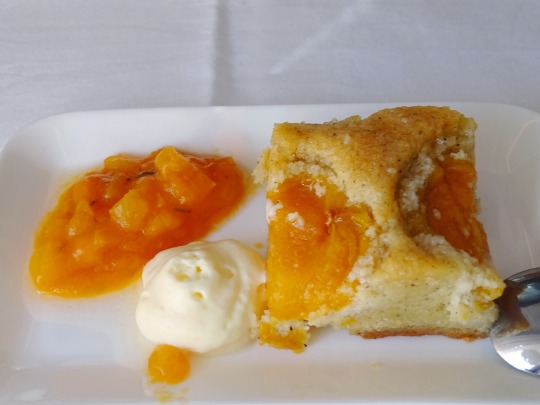
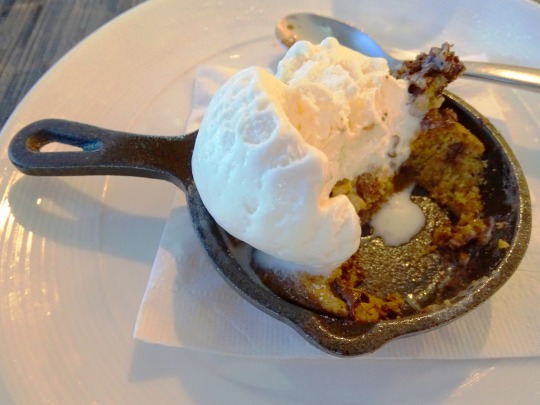

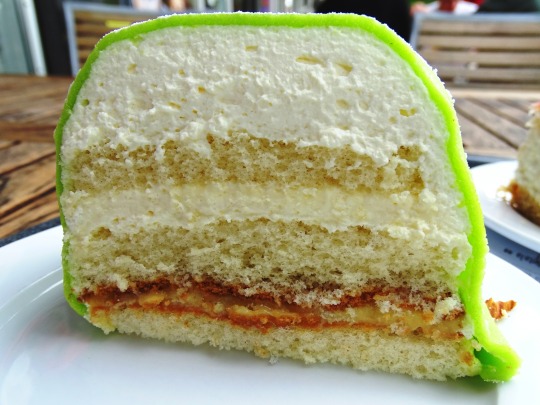
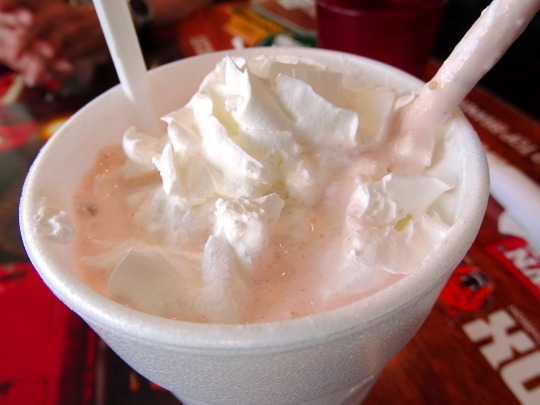


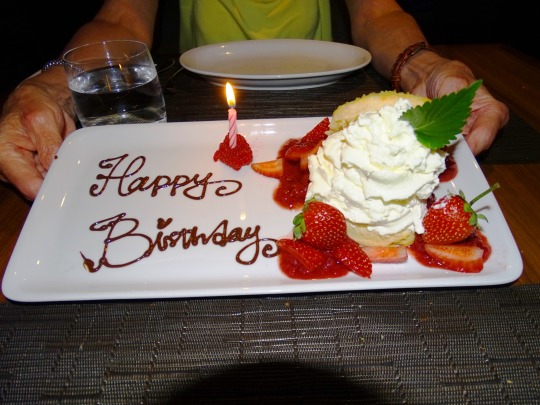

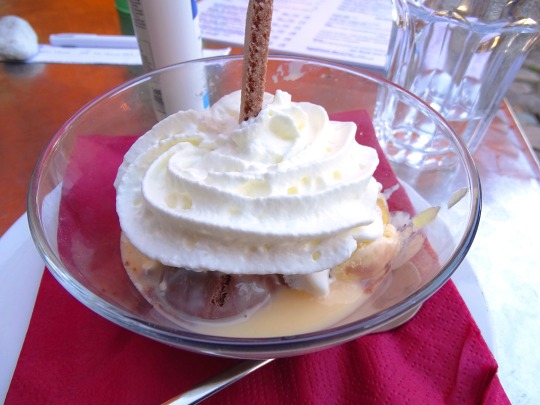
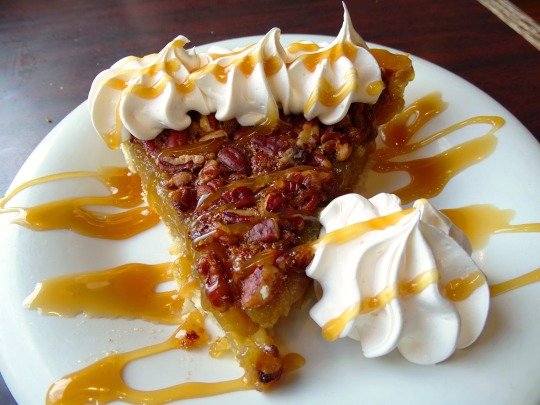



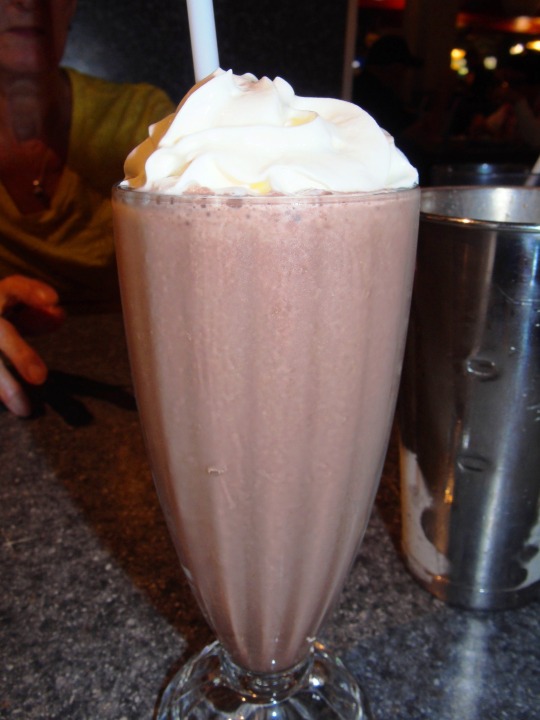

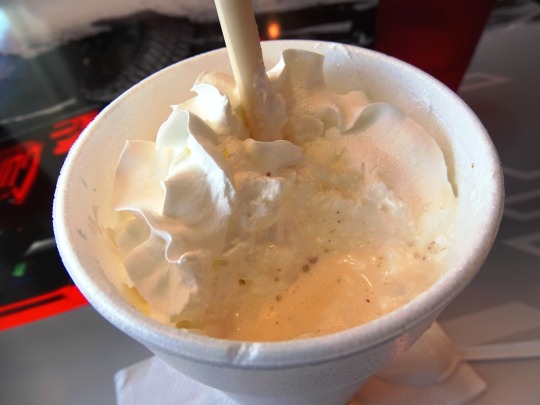
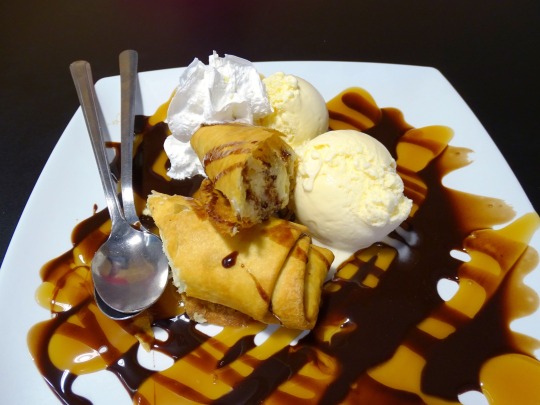


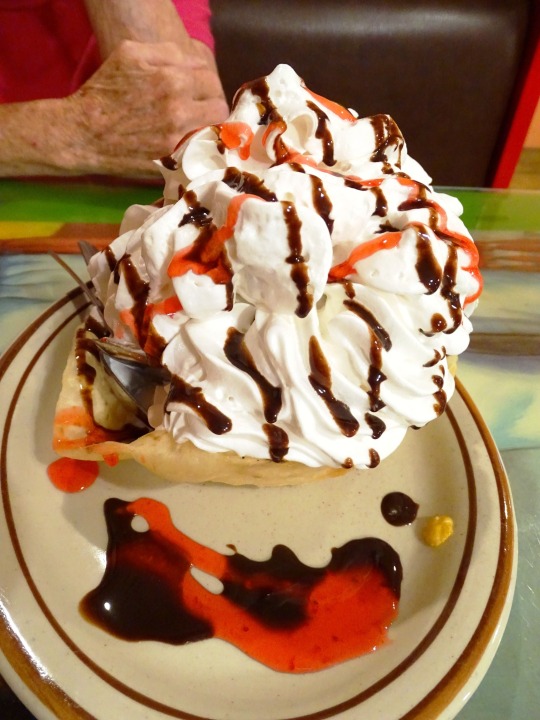

World Milk Day
Start your day with a glass of calcium-rich milk, visit a local dairy farm, or see what milk alternatives like soy, oat, or almond milk you might enjoy.
It’s a well-known fact that milk is rich with calcium, a mineral that promotes healthy teeth and bones. June 1st is the date that has been set aside to celebrate Milk Day. And, of course, this is a celebration that can take place anywhere in the world, given that milk is a global food!
The use of milk in food and drink has been happening for thousands of years. As most people can appreciate, milk is an integral part of most people’s daily lives, and there’s an entire industry that revolves around it as well.
Milk is a liquid food rich with nutrients like calcium. It’s a food product that is primarily used by mammals during infancy. Although, in the case of humans, people tend to consume it in adulthood, as most adult humans can digest the lactose in milk.
Of course, milk isn’t only available for drinking. It’s an essential ingredient for dairy foods such as butter, cream, ice cream, and cheese. Milk can also be found as an ingredient used in other types of foods, such as bread, cakes, cereal, desserts and so much more.
There is no denying that milk has become a mainstay of most people’s diets today. It’s also one of the cheapest food products to buy, given the industrial scale of milk production in the world. Some of the largest producers of milk are the United States, India, and China.
History of Milk Day
Milk Day became a globally celebrated event on June 1st, 2001. The global celebration, in general, can be traced back to the United Nations (UN). In particular, the FAO (Food and Agriculture Organization) of the UN has been responsible for organizing and marketing World Milk Day throughout the globe.
More than two decades ago, the FAO proposed a global Milk Day to recognize the importance of milk and the role that it plays in our world. In addition, this day was also created to provide direct focus to the milk industry and publicize the various activities connected with it. In fact, the dairy industry supports the livelihoods of approximately 1 billion people throughout the world!
But even before this day was created in 2001, Milk Day was celebrated by some other nations throughout history. In the British Isles, for example, a Milk Day celebration (“Imbolc” – Celtic for “milk”) took place in the pre-Christian era.
Considering the fact that over six billion people worldwide consume milk and dairy, it’s no surprise there was a need to celebrate this healthy, delicious beverage!
How to Celebrate Milk Day
June 1st is a day that many people may want to write their diaries. Milk plays such a significant role in the world that should certainly be celebrated in style!
But what can be done to celebrate such a momentous occasion? Try out some of these ideas for enjoying Milk Day:
Get the Day Started with a Glass of Milk
Why not celebrate today with a glass of fresh, cold milk in the morning to kick-start the day?! But don’t stop there. How about enjoying a big bowl of cereal full of delicious milk?
Of course, after drinking that glass of milk, don’t forget to snap a photo of that beautiful milk mustache! Share it with the world on social media to remind everyone else to enjoy Milk Day too.
Join an Official Milk Day Celebration
As a worldwide event, Milk Day comes with all kinds of official opportunities to celebrate! In 2020, more than 400 Milk Day campaigns took place in over 68 countries all over the globe, so there should be plenty to join in with again this year. Here are some events that have taken place in previous years:
World Milk Day Milk Donation. Happening in New York State, USA, several organizations have gotten together to provide a free gallon of milk to the people in their local community who visit a dairy farm.
Live Recipes by Renowned Chefs from Around the World. This live Facebook event has been hosted by Amul, India, which is the country’s largest dairy brand, with the intention of showing the importance of milk throughout different countries and cultures.
International Dairy Federation Raise a Glass Event. Hosted by the IDF in Brussels, Belgium, this event involved hosting a toast to milk from people all around the world.
Check the World Milk Day website to get access to all the needed information to make plans for this day.
Visit a Local Dairy or Farm
For those who have some extra time, especially those with kids who are ready to learn, consider visiting a local dairy to learn the process of milking cows and collecting the milk. This will also lead to learning about pasteurizing and homogenizing milk, methods used to filter milk and keep it long-lasting.
If there are no cow farms nearby, consider visiting a smaller farm that has goats. It’s still possible to learn about everything milk-oriented but may be more accessible because they might be smaller and locally owned.
Enjoy Other Milk Products
For lunch, why not have a mozzarella or Margherita pizza and drink a glass of chocolate milk to wash it down? After that, those who are still feeling hungry could always have some delicious ice cream for dessert!
Other options for enjoying milk products on this day (and every day!) include yogurt, sour cream, butter, custard, cream and all of the recipes that can be made from them.
Try a Milk Alternative
For folks who have trouble digesting dairy easily, why not try other non-dairy milk alternatives? Here are some popular options:
Soy Milk. A favorite as one of the early milk alternatives, this one is made from soybean plants that grow fairly prolifically in many places.
Almond Milk. Made by crushing almonds and blending them with water, and then straining out the mix to remove any solids that are left, this nutty milk is filled with protein.
Coconut Milk. This one uses the white, fleshy part of the coconut, grating it and soaking it in water. The cream rises and is skimmed off, then what’s left is strained to extract the coconut milk.
Whether with a milk product or a dairy alternative, celebrating World Milk Day can be loads of fun!
Source
#chocolate cake#Rice pudding with cinnamon#flan de huevo#Pudim flan#Crème caramel#chocolate pie#whipped cream#dessert#Spain#travel#original photography#summer 2021#vacation#World Milk Day#1 June#WorldMilkDay#Princess cake#Strawberry Shortbread#USA#Strawberry Milkshake#Chocolate Banana Milkshake#Berries&Cream#Coconut Cream Pie#Banana Cream Pie#Strawberry Cheesecake Milkshake#Pecan Praline Milkshake#food#restaurant#Coconut Cream Pie Cheesecake#Pecan Pie
3 notes
·
View notes